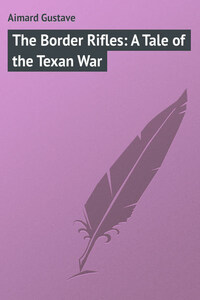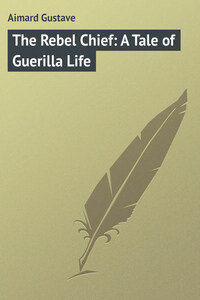In the year 1783, Western New York – or at least what was then deemed Western New York – was an almost unbroken wilderness, scarcely known to the inhabitants of the eastern and south-eastern portions of the State; although the greater part of that large tract of territory then known as Tryon County, was especially an unexplored country. It is true that occasionally some adventurous pioneer had penetrated the wilderness, and endeavored to form for himself and family a home, where, if he could not enjoy the luxuries and comforts to be found in more populous sections, he could at least be freed from many of the evils incident to the growing settlements and cities. Some there were, who had not these inducements, but, moved by a spirit of hardy enterprise, and with a love for the excitements and dangers of a pioneer life, penetrated the wilderness alone, with no companion but the rifle – a sure and steadfast friend amidst the dangers which were certain to beset him.
Thus, an adventurous traveler, who perhaps fancied himself the first white man who had ever toiled through the forests of this portion of the State, would be surprised as he came upon the traces of civilization, in a log hut, situated, perhaps, in the midst of a few acres of partially cleared wilderness. When such happened to be the case, it would be no occasion for wonder that the traveler and the settler became at once acquaintances and friends. The news from the settlements – inquiries for friends, and political information, would gladly be exchanged for the homely but welcome entertainment, which was at once provided.
At the period which we have chosen for our narrative, the County of Tryon was inhabited by roving bands of Indians, mostly belonging to the Six Nations. Some favorite localities were selected, which might be deemed peculiarly the homes of these bands; although their roving dispositions, the pursuit of game, or hostile encounters, would prevent the permanent occupation of any one locality.
That portion of Tryon County with which the reader will become somewhat acquainted in due course of this narrative, was more especially inhabited by that division of the Iroquois, known as the Oneidas. But it was not infrequent that bands belonging to other tribes of the confederacy made incursions into this territory, in pursuit of game, and occasionally on less peaceable missions.
It is well known that during the War of the Revolution, the different tribes, composing the confederacy of the Six Nations, were divided in their choice between England and the rebellious Colonies. The Oneidas, and a part of the Tuscaroras and Mohawks, adhered to the Colonies, while the other three nations of the confederacy were leagued with England, under Col. Butler, and the notorious Johnson. It was under the former officer that the Senecas, principally, aided by Tories, perpetrated the Massacre of Wyoming. The Onondagas, at first, professed neutrality between the belligerent parties; but as it was believed that they aided in the more hostile operations of the Senecas, a detachment was sent from Fort Stanwix, which destroyed their villages. This attack was revenged by assaults upon the settlements of Schoharie and the western borders of Ulster.
During the war, Tryon County contained a large number of Tories, who were constantly inciting the Indians to acts of hostility against the Colonies. But while they were successful with a large portion of the Iroquois, they signally failed in all their attempts to abate the fidelity of the Oneidas and Tuscaroras. This division in the councils of the Six Nations, disturbed the amity which had previously existed between the confederated tribes; and the bond which had so long united them, was severed forever. More than once, were the Oneidas driven from their villages, and compelled to seek protection from the whites; and parties of the latter tribe, with a part of the Tuscaroras, actually took up arms against their ancient brethren. It is said that the notorious Col. Walter Butler was killed by an Oneida Chief, during his flight after the battle of Johnstown.
At the time embraced by our narrative, it was not infrequent that difficulties occurred between the separated parties of the confederacy, and hostile encounters took place, which ended in bloodshed. Indeed, the successful Colonies had not concluded any treaty of peace with the Mohawks, Onondagas, Cayugas, and Senecas, until October, 1784. By that treaty, those tribes consented to a release of prisoners, and also to a cession of all their territory west of Pennsylvania.
The Six Nations, at the time of the Revolution, were considered the most formidable of the Indian warriors to be found on the North American Continent; and overtures were made to them, as well by the Congress of the confederated Colonies, as by the English Government. The overtures of the latter were made through Col. Guy Johnson – successor to Sir William – and through the great influence he possessed over them, he was able to induce them to take up arms against the peaceable and scattered inhabitants of the frontier. The number of Indians of the Six Nations who actually took up arms in favor of Great Britain, is estimated at about 1200. The whole number of Indians, of all tribes, who were employed by the British against the Colonies, was estimated by Captain Dalton, (Superintendent of Indian Affairs in 1783.) at 12,690.














